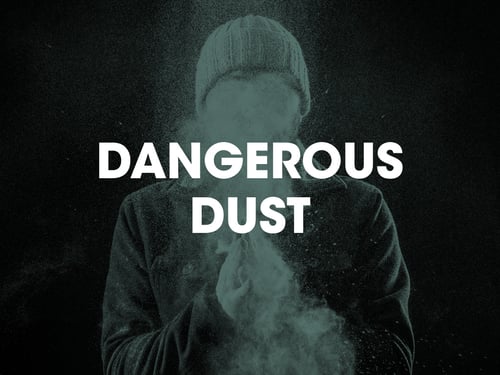There are many types of dust created during the construction process and regardless of how careful or safety conscious you may be as a company, the creation of dust can be inevitable. It’s therefore important to understand the different kinds of dust which can be created within a building site and the dangers that each poses. In a later blog we will go into what steps can be taken to protect you, your employees and the public at large from construction dust. In this blog we will focus on identifying the danger:
Silica Dust
Silica is present in a large array of different materials such as granite, sandstone and sand. It is also commonly found within a variety of construction materials such as concrete and mortar. Silica is broken into incredibly fine dust (known as respirable crystalline silica (RCS)) during many simple tasks found in most builds (cutting, drilling, grinding etc.).
Silica dust can cause a disease of the lungs called silicosis when inhaled.
Non-silica dust
There are a variety of construction products which either do not contain silica or only do so in miniscule quantities. These include gypsum, cement, marble, limestone and dolomite. Quite often, non-silica will become mixed with silica when cutting things like bricks, again creating a risk of silicosis.
Wood dust
Wood has been a widely used construction material since the days in which humans first began building things and it still is today. It comes in two main forms, those being hardwood and softwood. There are also a range of wood-based products, which when cut, cause wood dust too (these include MDF and chipboard. When wood dust becomes airborne through sanding or cutting it is inhaled and can cause allergic respiratory symptoms (including asthma), mucosal and non-allergic respiratory symptoms. Those who work regularly with wood (carpenters etc.) are up to four times more likely to have asthma.


Have your say